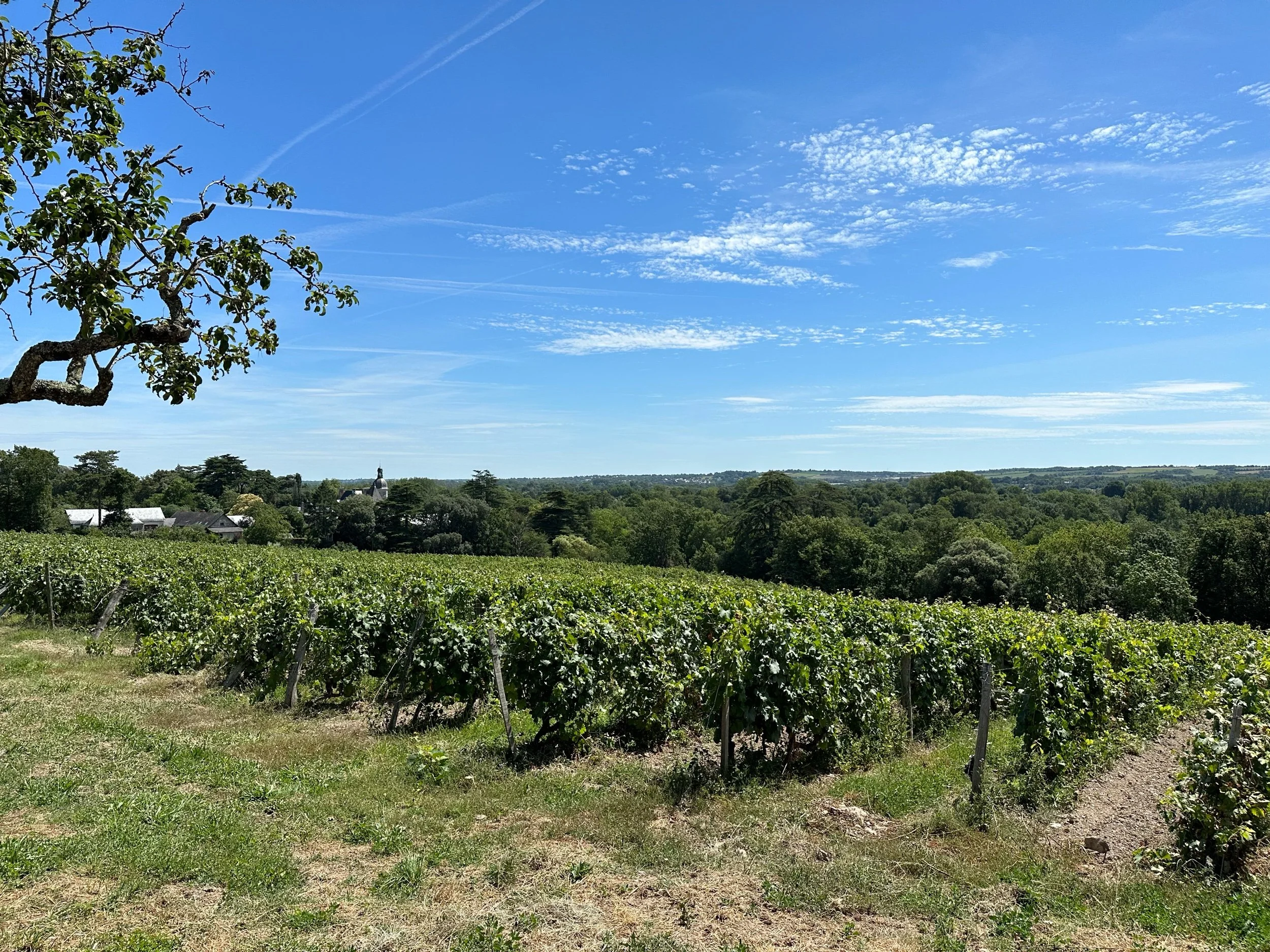St-Joseph
It was a last-minute decision to drive all the way from Montpellier to the northern Rhône, which, depending on traffic, takes over two hours. So it was something of a flash visit, taking in one producer in St-Joseph before we met my aunt for lunch by the river in Tain-l’Hermitage below the mighty hill of Hermitage.
Whereas the appellation of Hermitage is concentrated on the one hill, St-Joseph is much larger, stretching almost all the length of the northern Rhône. When St-Joseph was created in 1956, there were just six villages included in the appellation, concentrated around the village of Mauves (which is how the wines were referred to in the nineteenth century). This is where the St-Joseph lieu-dit is located, after which the modern appellation is named (see the photo above). There are now twenty-six villages in the appellation, as it has crept northwards. This expansion has been controversial: wines from the wetter north taste different from the historical centre in the sunny south and its granite soils. Flatter vineyards also produce less concentrated wines than from the slopes. These disparities are slowly being addressed; the river Rhône now has to be seen from a vineyard to be included in the appellation and be south-facing. Even top producers have seen their vineyards removed because they don’t fit the new criteria.
the river Rhône
There are other regulations too. As with the rest of the northern Rhône, the only black grape allowed is Syrah. Like Hermitage, the white grapes are Marsanne and Roussanne. There are ways around these rules for St-Joseph producers. Pierre et Jérôme Coursodon, whom I visited, have a vineyard just outside the appellation planted to Viognier and Roussanne. This allows for a more experimental, heavily aromatic wine called “Etincelle,” 70% Viognier, 30% Roussanne, labelled as Vin de France. Wines can also be labelled Collines Rhoadiennes, which captures all of the northern Rhône.
white wines
According to Valérie Coursodon, twenty years ago the white wines of St-Joseph were very difficult to sell and subsequently little was made. Even though they still only account for 6-7% of production, white wines are now much in demand and plantings of white varieties are increasing: their 2022 “Silice,” made from Marsanne, is already sold out. It’s no wonder the wines are gaining more appreciation, as they are often quite wonderful. “Paradis de St-Pierre” is 90% Marsanne/10% Roussanne, which we tried from the barrel and was superb, with a waxy tingle and a grainy texture. Across the river in Crozes-Hermitage—another appellation that’s a little too large and varied—Laurent Fayolle makes a Marsanne in 20% new oak which has a spicy creaminess. At lunch, we had a pôt (an unlabelled 46cl bottle) of tasty white Crozes-Hermitage. From almost no one drinking white northern Rhône, it’s now available in shiners for lunch.
the reds
All red wine in the northern Rhône is Syrah, so what makes the best St-Joseph different? First of all, location is key: the best wines come from steep slopes, arguably from the south of the appellation. This allows longer ripening, maintaining fresh acidity, and developing a firm tannic structure as well as a ripe fruit profile.
Winemaking, in relation to the site the grapes come from, also influences the character and style of the wine, as seen at Coursodon. “Silice” comes from different parcels for larger production of 40,000 bottles and is aged for one year in barrel, for a fresh, fruity, spicy style. “L’Olivaie” comes from 50-year-old vines on a south-facing parcel. Destemming depends on the year: in the warm 2022 vintage, tasted from barrel, 20-30% of the stems were left; in the wetter, cooler 2021, tasted from bottle, all the fruit was destemmed. The wine is also aged in 20% new oak barrels, which the riper, fruitier, more concentrated style can absorb without losing its fresh character. There is also an occasional wine called “La Sensonne,” initially commissioned solely for the US market, but now more widely available. It’s 100% new oak, and is only made in warmer vintages when the fruit has the structure to handle all the new oak. Tasted from the barrel, it’s still quite woody with a clear oak-influenced spiciness, but also with a ripe, firm, round texture and structure.
St-Joseph should be a by-word for quality; instead, it takes a bit of research when buying a bottle. Look for a producer with a good reputation, preferably from the south of the appellation, and certainly a wine from the steep slopes—there are also very good wines to the north on slopes which are a little less ripe and concentrated. St-Joseph doesn’t quite have the power of Côte-Rôtie, Hermitage, or Cornas, but it is less expensive and more approachable when young with the firm tannic structure to age 7-10 years, and a black pepper quality characteristic of the best northern Rhône. And if you want a more affordable alternative to white Burgundy, look to St-Joseph.





